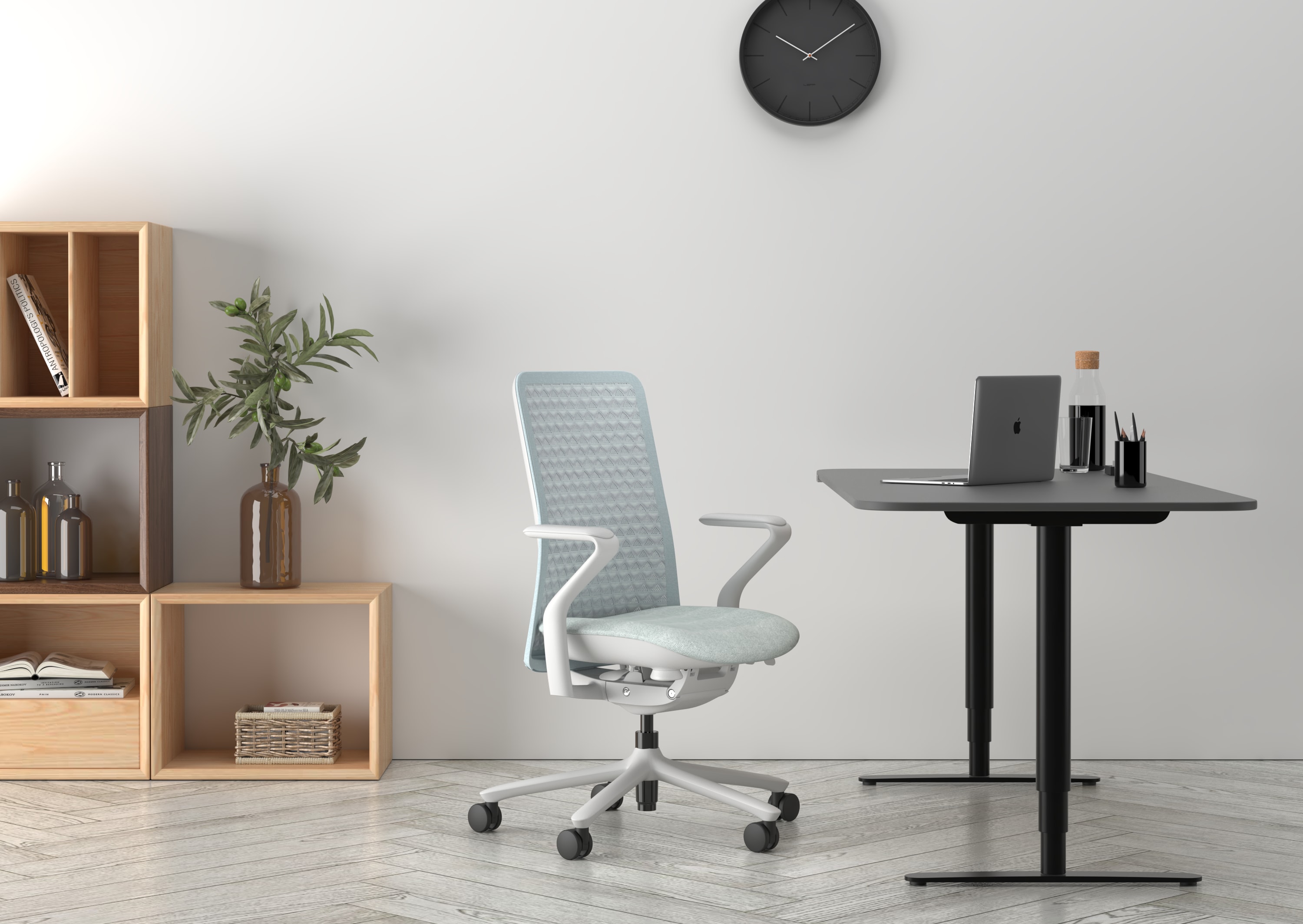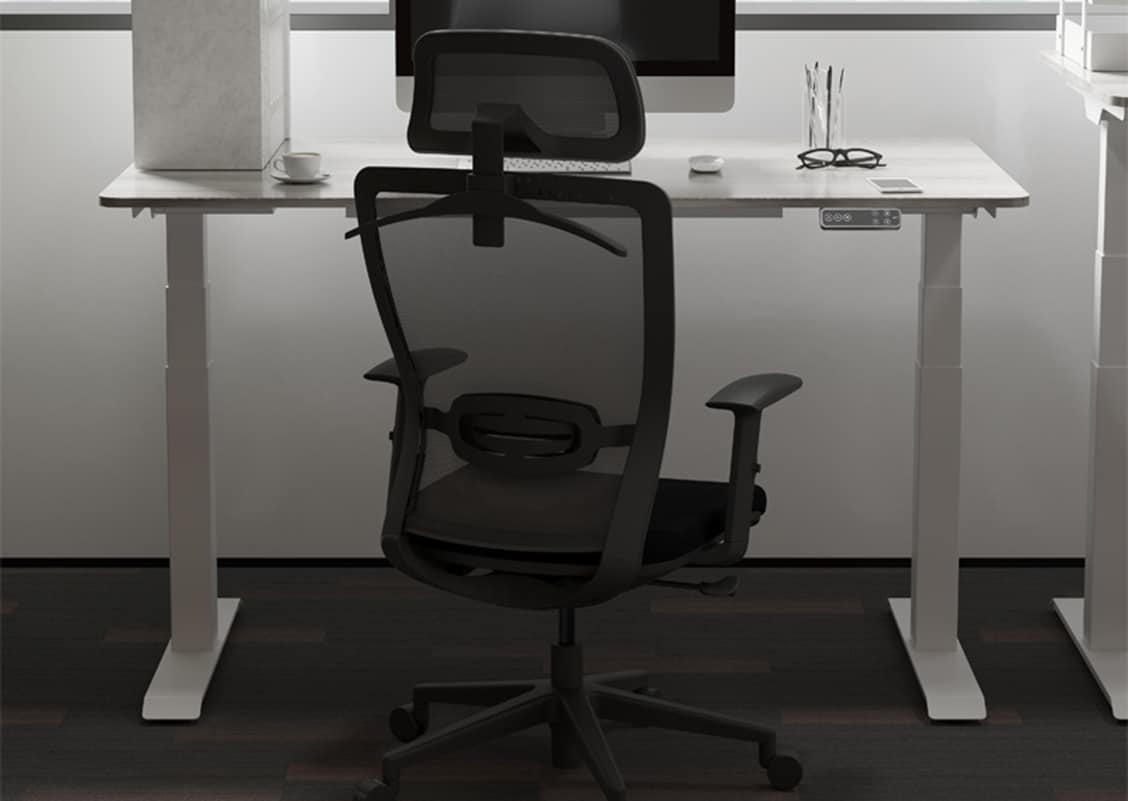Welcome to the centre stage of office chair debates, where we spotlight the oft-discussed headrest. It's a component that divides opinion, polarising the community of ergonomic chair enthusiasts. One thing we can all agree on, though, is the indisputable importance of a comfortable and supportive office chair for long working hours.
As the workplace evolves, the question of whether a headrest is a necessary feature or an extra addition remains. This debate isn't trivial; the correct decision could significantly impact your workday, possibly alleviating or exacerbating neck pain and fatigue. Come along as we investigate the true impact of headrests on ergonomic chairs.
Unpacking The Growing Trend of Ergonomics
Ergonomics is no longer a niche interest; it's a growing trend in modern workplaces, from bustling offices to cosy home workspaces. As more research underscores the link between physical comfort and productivity, the demand for ergonomic furniture, including chairs, has skyrocketed. But it's not just about productivity.
The proliferation of ergonomic chairs also indicates increased awareness about employee well-being and a push towards creating healthier work environments. Investing in ergonomic furniture has become a popular choice for many consumers as we become more knowledgeable about the long-term impact of our work habits on our health.
Understanding The Anatomy of an Ergonomic Chair

What's in an ergonomic chair that differentiates it from traditional office chairs? They're meticulously designed with features to cater to the user's comfort and health needs. Adjustability is a keyword in ergonomic chairs, including seat height, lumbar support, armrests, and seat depth.
But there's more. Ergonomic chairs are also designed with materials like breathable mesh for better air circulation, and their structures are intended to provide a balanced weight distribution for maximum comfort and support during long sitting periods.
The Specific Role of a Chair Headrest
Now let's turn our attention to the hotly contested headrest. Designed to support the neck and head, a headrest can be a powerful ally in maintaining a healthy posture throughout the day. Supporting the head's weight can alleviate the stress on the neck and shoulder muscles.
This reduction in strain could be a game-changer for office workers, allowing for a more relaxed and productive work environment. But is a headrest an essential part of an ergonomic chair, or is it a 'nice-to-have' feature?
Advantages of a Headrest on an Ergonomic Chair
There's a compelling case for the headrest. For one, it provides essential support to the neck and head, reducing the likelihood of discomfort and injury. Moreover, a properly adjusted headrest can improve blood circulation, increasing alertness and focus.
Furthermore, having a headrest can prevent neck hyperextension during breaks or moments of relaxation, providing a more comfortable resting position. A headrest could be your secret weapon for achieving a more ergonomic, health-friendly workspace.
Disadvantages of a Headrest on an Ergonomic Chair
It's not all rosy in the headrest world, though. Firstly, improper headrest use can exacerbate neck discomfort or cause new issues. Adjustment is a critical factor; if not done correctly, a headrest can be more of a hindrance than a help. Plus, there's the cost factor.
Ergonomic chairs with headrests usually come at a higher price point, and budget considerations may dictate some buyers' decisions. Lastly, some people might simply find a headrest obstructive or uncomfortable based on their body proportions or personal preferences.
What Research Says: Pros and Cons
Scientific studies provide a wealth of information on the pros and cons of using a headrest, though consensus is elusive. Some research points to the benefits of a headrest in promoting better posture, reducing neck strain, and ultimately contributing to a more comfortable sitting experience. However, other studies caution that improper headrest use—such as an incorrect adjustment—can lead to increased discomfort or even cause new issues.
The effectiveness of headrests also varies greatly based on individual factors such as body proportions, personal comfort, and existing physical conditions. It's essential to remember that while research can guide us, the benefits or disadvantages of a headrest are often highly individualistic and depend significantly on correct usage.
Decision-Making Factors: Is A Headrest Right for You?

Making the call about whether a headrest is right for you requires careful consideration. Factors to remember include how long you typically sit each day, your personal comfort preferences, and whether you have pre-existing neck or shoulder problems. Workspace ergonomics should also be considered.
For example, suppose your workstation setup causes you to look down at a screen. In that case, a headrest might not be beneficial and could worsen your posture. On the other hand, if you have a well-optimized workstation and often lean back in your chair, a headrest could be beneficial.
Best Practices for Using a Chair with a Headrest
Proper usage is key if you opt for a chair with a headrest. Adjust the headrest to align with the back of your head when sitting upright, supporting your neck's natural curve. This prevents your head from being pushed forward, causing an awkward neck position.
Beyond headrest adjustment, incorporate regular movement into your day to break up long sitting periods. Practice neck and shoulder stretches to counteract stiffness. Lastly, remember that a headrest isn’t an excuse to slouch—maintain an upright, balanced posture for the most ergonomic benefits. Your chair is a tool, but good habits make the difference.
Conclusion
Ultimately, choosing an ergonomic chair with or without a headrest boils down to your unique needs and preferences. The best ergonomic chair is the one that makes you feel comfortable and supports your posture and movements throughout your workday. Regardless of your decision on the headrest debate, remember that your comfort and health should always come first.
At FlexiSpot, we offer a variety of ergonomic chairs to cater to different needs, all designed to support a healthy work lifestyle. Do not hesitate to explore ergonomics and workplace wellness more to make an informed decision about your ideal office chair. After all, a well-chosen office chair is an investment in your work and well-being.